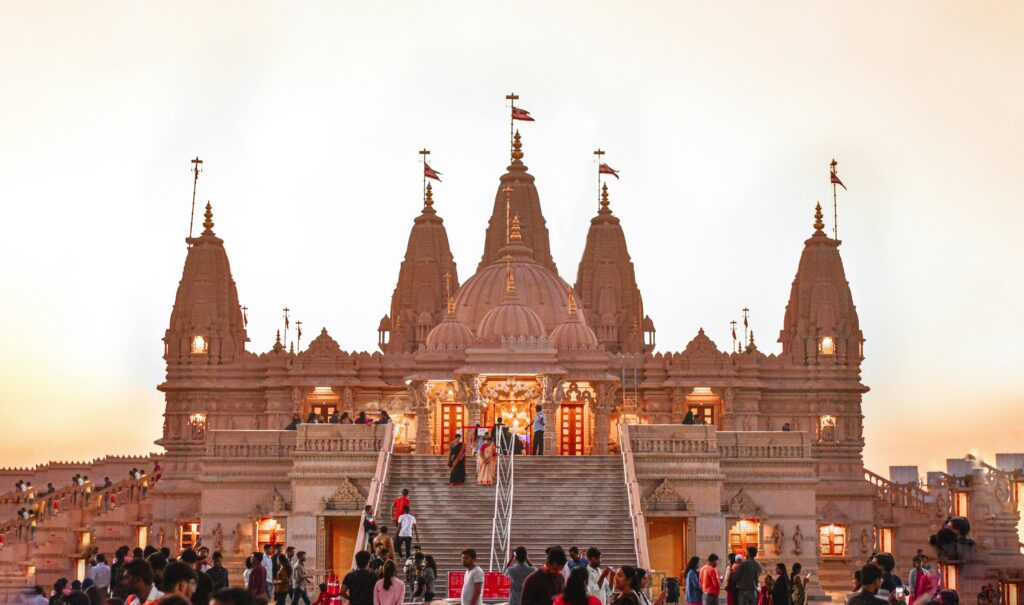Ayodhya Ram Mandir: A Journey Through Time
The Ayodhya Ram Mandir, a symbol of faith and devotion, stands as a testament to India’s rich cultural heritage. Located in Ayodhya, Uttar Pradesh, this temple has been a focal point of Hindu religious sentiment for centuries. The journey towards the construction of the Ram Mandir has been long and eventful, marked by legal battles, political debates, and unwavering devotion. This article delves into the history, significance, and current developments of the Ayodhya Ram Mandir.

Historical Background
Ayodhya: The Birthplace of Lord Rama
Ayodhya holds a special place in Hindu mythology as the birthplace of Lord Rama, the seventh incarnation of Lord Vishnu. According to the Ramayana, Lord Rama was born in Ayodhya and spent his early years there before embarking on his epic journey.
The Ancient Ram Mandir
Historical records suggest that a grand temple dedicated to Lord Rama existed in Ayodhya around the 11th century. This temple was believed to have been built by the kings of the Ikshvaku dynasty, to which Lord Rama belonged. Over the centuries, the temple underwent several renovations and expansions.
The Controversial Site
The Babri Masjid and Its Demolition
In 1528, the Mughal emperor Babur ordered the construction of a mosque, known as the Babri Masjid, at the site traditionally believed to be the birthplace of Lord Rama. This act sowed the seeds of a long-standing dispute. On December 6, 1992, the Babri Masjid was demolished by a large group of Hindu activists, leading to widespread communal riots and legal battles.
Legal Battles and Political Debates
The demolition of the Babri Masjid sparked a series of legal disputes and political debates. Multiple suits were filed in Indian courts by Hindu and Muslim parties, each claiming ownership of the disputed site. The case saw numerous twists and turns, with the Indian judiciary playing a pivotal role in resolving the conflict.
The Supreme Court Verdict
A Landmark Judgment
On November 9, 2019, the Supreme Court of India delivered a landmark judgment, paving the way for the construction of the Ram Mandir. The court ordered the disputed land to be handed over to a trust for the construction of the temple, while also directing the government to allot an alternative piece of land for the construction of a mosque.
Formation of the Shri Ram Janmabhoomi Teerth Kshetra Trust
Following the Supreme Court verdict, the Indian government formed the Shri Ram Janmabhoomi Teerth Kshetra Trust to oversee the construction of the Ram Mandir. The trust was entrusted with the responsibility of designing, funding, and managing the construction of the temple.
Construction and Architecture
Design and Layout
The design of the Ayodhya Ram Mandir is a blend of traditional Indian temple architecture and modern construction techniques. The temple, once completed, will have three floors, each adorned with intricate carvings and sculptures depicting scenes from the Ramayana. The sanctum sanctorum will house the idol of Lord Rama, along with idols of Sita, Lakshmana, and Hanuman.
Foundation and Construction Progress
The foundation stone for the temple was laid on August 5, 2020, by Prime Minister Narendra Modi. Since then, the construction has been progressing at a steady pace, with the aim of completing the temple by 2024. State-of-the-art technology and materials are being used to ensure the temple’s durability and grandeur.
Cultural and Religious Significance
A Symbol of Hindu Unity
The Ayodhya Ram Mandir is more than just a place of worship; it is a symbol of Hindu unity and resilience. The temple’s construction is seen as a culmination of centuries of struggle and devotion, and it holds a special place in the hearts of millions of Hindus worldwide.
Pilgrimage Destination
Once completed, the Ram Mandir is expected to attract millions of devotees and tourists from around the world. Ayodhya, already a significant pilgrimage destination, will witness a surge in visitors, further boosting the local economy and tourism industry.
Socio-Political Impact
Impact on Hindu-Muslim Relations
The Ayodhya dispute has had a profound impact on Hindu-Muslim relations in India. While the Supreme Court’s verdict was widely accepted, it remains crucial for both communities to work towards reconciliation and harmony. The construction of the Ram Mandir presents an opportunity to foster mutual respect and understanding.
Political Ramifications
The Ayodhya Ram Mandir has been a significant issue in Indian politics. Political parties have often used the temple’s construction as a rallying point to garner support. The completion of the temple is likely to influence political dynamics in the country, especially during election seasons.
The Future of Ayodhya
Development Plans
The Indian government has announced several development plans for Ayodhya, aiming to transform it into a global religious and cultural hub. These plans include the construction of new infrastructure, improved connectivity, and the promotion of heritage tourism.
Ayodhya as a Model City
Ayodhya is set to become a model city, showcasing India’s rich cultural heritage and modern development. The city’s transformation will not only enhance its religious significance but also contribute to its overall growth and prosperity.
Conclusion
The rebuilding of the Ayodhya Ram Mandir is a historic event, marking the end of a long-standing dispute and the beginning of a new era for Ayodhya. The temple’s construction is a testament to the resilience and faith of millions of devotees. As Ayodhya transforms into a global religious and cultural hub, the Ram Mandir will stand as a symbol of unity, devotion, and heritage for generations to come.
FAQs
- What is the significance of Ayodhya in Hindu mythology? Ayodhya is believed to be the birthplace of Lord Rama, making it a significant pilgrimage site for Hindus.
- When was the foundation stone for the Ram Mandir laid? The foundation stone was laid on August 5, 2020.
- Who oversees the construction of the Ram Mandir? The Shri Ram Janmabhoomi Teerth Kshetra Trust is responsible for the construction of the temple.
- What impact will the Ram Mandir have on Ayodhya? The Ram Mandir is expected to boost tourism, enhance the local economy, and transform Ayodhya into a global religious and cultural hub.
- How has the Ayodhya dispute affected Hindu-Muslim relations? The dispute has been a source of tension, but the construction of the Ram Mandir presents an opportunity for reconciliation and harmony.


